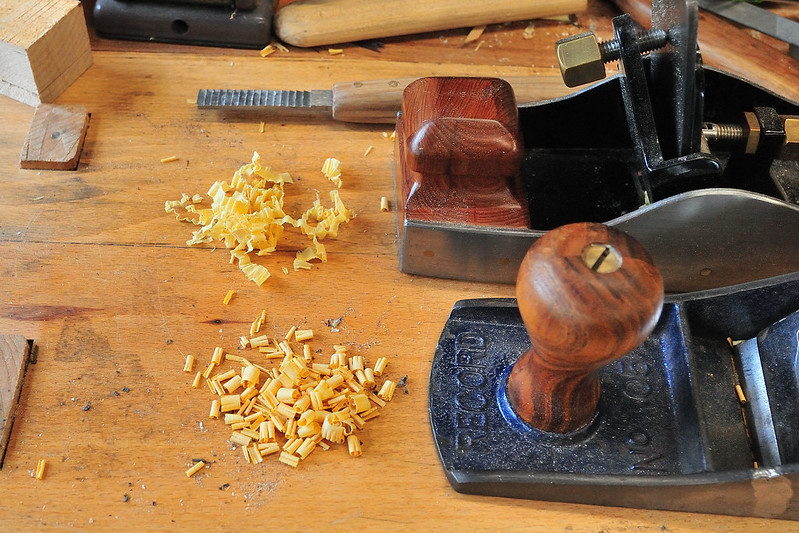Hello all,
I was given a 212 Scraping plane from a very kind family member for Christmas. I must be doing something wrong however, as the only shavings I am currently getting are either so rough, they are like a blunt plane iron would give you (complete with dreaded tearout), or just dust, like a blunt cabinet scraper would give you.
To run through what I have done; I have set it at 45 degrees in my honing guide, so the bevel is completely flat to the stone. Then honed it on a 1,000 waterstone, and then a 8,000 waterstone (but without slightly raising the angle for the 8,000, as I would for a normal plane iron). Then I lapped the back of the iron on the 8,000 stone, to roll off the wire edge. Should one hone it at a higher angle to 45 degrees on the 1,000 stone , and even higher still on the 8,000?
I then set it in the Plane, which I have sat on a piece of float glass. I have tried setting it both completely flat, and with a piece of paper underneath the tongue of the plane. I am careful not to overtighten the thumbscrew on the bronze cap.
I am then trying to use it as one would with a normal plane iron, not pressing too hard; just with a nice even smooth pressure all along. the piece of wood.
Please could somebody with experience of this tool, also explain to me, if one moves the frog so the blade is more vertical (towards 90 degrees from flat), will that make the blade cut more, or less? And vice-versa, if I move the frog backwards, so it is more towards 70 degrees from flat, what effect does that have on the cutting action of the blade?
Any help would be very kind. Thanks.
I was given a 212 Scraping plane from a very kind family member for Christmas. I must be doing something wrong however, as the only shavings I am currently getting are either so rough, they are like a blunt plane iron would give you (complete with dreaded tearout), or just dust, like a blunt cabinet scraper would give you.
To run through what I have done; I have set it at 45 degrees in my honing guide, so the bevel is completely flat to the stone. Then honed it on a 1,000 waterstone, and then a 8,000 waterstone (but without slightly raising the angle for the 8,000, as I would for a normal plane iron). Then I lapped the back of the iron on the 8,000 stone, to roll off the wire edge. Should one hone it at a higher angle to 45 degrees on the 1,000 stone , and even higher still on the 8,000?
I then set it in the Plane, which I have sat on a piece of float glass. I have tried setting it both completely flat, and with a piece of paper underneath the tongue of the plane. I am careful not to overtighten the thumbscrew on the bronze cap.
I am then trying to use it as one would with a normal plane iron, not pressing too hard; just with a nice even smooth pressure all along. the piece of wood.
Please could somebody with experience of this tool, also explain to me, if one moves the frog so the blade is more vertical (towards 90 degrees from flat), will that make the blade cut more, or less? And vice-versa, if I move the frog backwards, so it is more towards 70 degrees from flat, what effect does that have on the cutting action of the blade?
Any help would be very kind. Thanks.




































